You are using an out of date browser. It may not display this or other websites correctly.
You should upgrade or use an alternative browser.
You should upgrade or use an alternative browser.
Chinese UAV/UCAV development
- Thread starter AssassinsMace
- Start date
- Status
- Not open for further replies.
Hendrik_2000
Lieutenant General
A bit of write up about Wing Loong II first flight from HenriK
On Monday, February 27th, the new Chinese combat drone Wing Loong II (Ⅱ Ⅱ) successfully flew to an air base in northwestern China.
On February 27, 2017, the drone Wing Loong II made its first successful flight.
LEI Qiang, former test pilot of the Chinese Air Force, responsible for the first flight of Wing Loong II.
The drone Wing Loong II presented at the Zhuhai Air Show in November 2016.
4 times heavier than its big brother Wing Loong I , which flew for the first time almost 10 years ago in October 2007, the Wing Loong II, with a maximum take-off weight of 4,200 kg, made China The second country in the world to be able to build an armed drone of medium cruising altitude and long range (MALE) in this gauge.
This drone, which has been awaited by the AVIC group but also by its first customer in the Middle East - which signed the biggest contract ever made with a Chinese drone, even before the first flight of Wing Loong II - took off under LEI Qiang, former test pilot of several models of Chinese fighter aircraft including the J-10 .
"The Wing Loong II is on the same level as the American MQ-9 Reaper ," said LI Yi Dong, Chief Program Engineer at 611 Chengdu Institute. "We are competing with the world's best drones with our Technologies, and we could surpass them in the near future. "
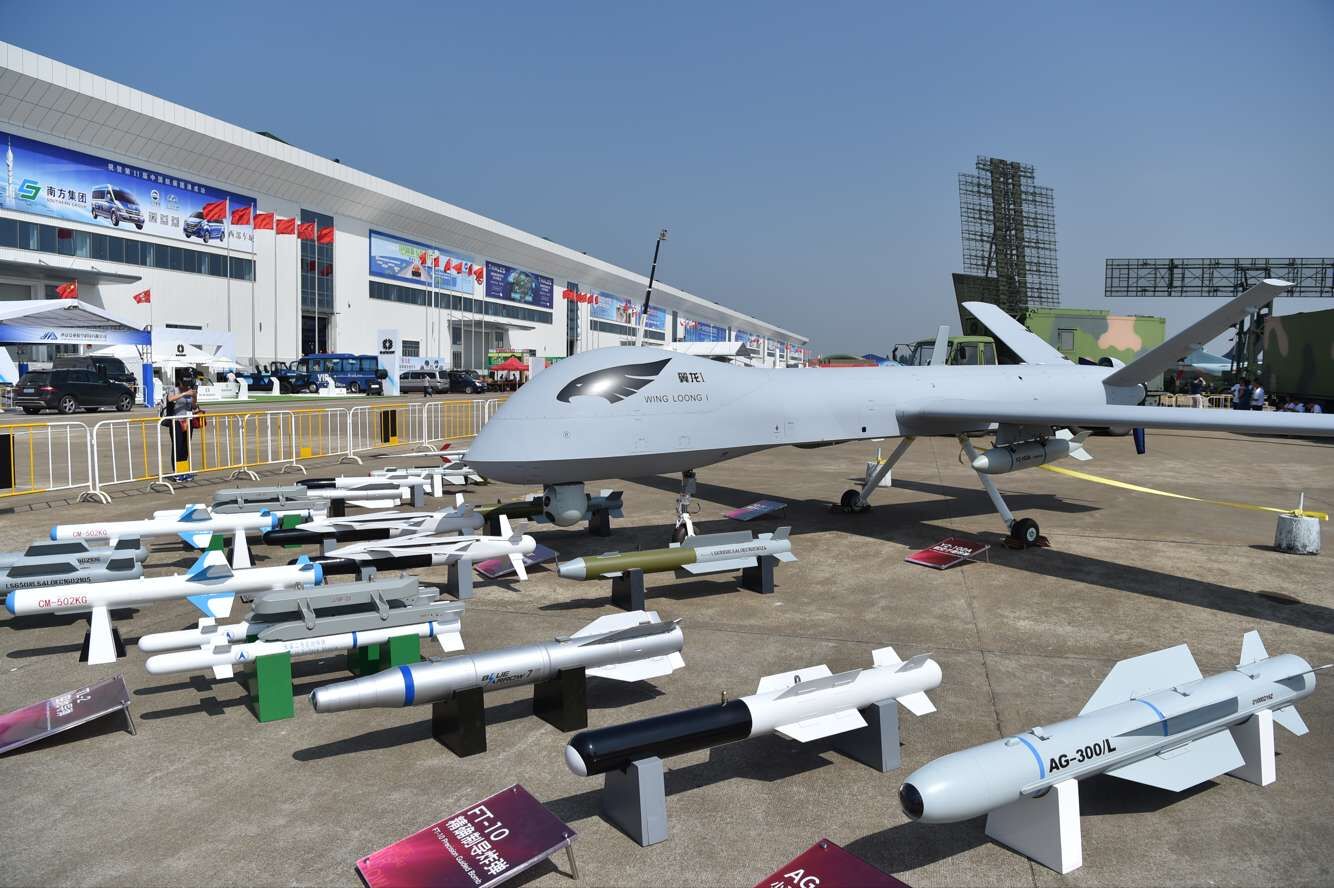
In the space of 5 years, the family of drones Wing Loong has firmly established itself in the segment of armed drone of the international market, especially in Central Asia and the Middle East. Its clients include Kazakhstan, Uzbekistan, Saudi Arabia, the United Arab Emirates and Egypt.
The arrival of the Wing Loong II should therefore consolidate the positions taken by Chinese manufacturers and offer additional capabilities to its future customers. The drone is 11 meters long, 4.1 meters high and 20.5 meters wide. It is capable of flying up to 9,000 meters, with a speed of 370 km / h.
Thanks to a larger size and a new Chinese turboprop, Wing Loong II can carry 480 kg of weapons for identification and strike missions. For reconnaissance missions, it can count on a complete optronic suite equipped with TV, IR and laser channels, as well as a synthetic aperture radar (SAR). The autonomy of flight is about 20 hours.
The all-composite variant Wing Loong ID
Apart from this new 4 ton drone, the 611 Chengdu Institute is also working on a 100% composite variant of the family, called the Wing Loong ID . By maintaining exactly the same size as its elder, its MTOW now reaches 1,500 kg, 400 kg more than the Wing Loong I which is made of more traditional materials. Thanks to a lower unladen mass obtained by the total use of composite materials and an updated engine, the external loads of this version are doubled to 400 kg and its ceiling increases to 7,500 meters compared to 5,000 meters previously .
This version could be very interesting for existing customers of Wing Loong I, which will significantly increase the carrying capacity of the "same" drone. They will therefore not need to reform pilots and ground personnel, or modify or create new support infrastructures.
On Monday, February 27th, the new Chinese combat drone Wing Loong II (Ⅱ Ⅱ) successfully flew to an air base in northwestern China.
On February 27, 2017, the drone Wing Loong II made its first successful flight.
LEI Qiang, former test pilot of the Chinese Air Force, responsible for the first flight of Wing Loong II.
The drone Wing Loong II presented at the Zhuhai Air Show in November 2016.
4 times heavier than its big brother Wing Loong I , which flew for the first time almost 10 years ago in October 2007, the Wing Loong II, with a maximum take-off weight of 4,200 kg, made China The second country in the world to be able to build an armed drone of medium cruising altitude and long range (MALE) in this gauge.
This drone, which has been awaited by the AVIC group but also by its first customer in the Middle East - which signed the biggest contract ever made with a Chinese drone, even before the first flight of Wing Loong II - took off under LEI Qiang, former test pilot of several models of Chinese fighter aircraft including the J-10 .
"The Wing Loong II is on the same level as the American MQ-9 Reaper ," said LI Yi Dong, Chief Program Engineer at 611 Chengdu Institute. "We are competing with the world's best drones with our Technologies, and we could surpass them in the near future. "

In the space of 5 years, the family of drones Wing Loong has firmly established itself in the segment of armed drone of the international market, especially in Central Asia and the Middle East. Its clients include Kazakhstan, Uzbekistan, Saudi Arabia, the United Arab Emirates and Egypt.
The arrival of the Wing Loong II should therefore consolidate the positions taken by Chinese manufacturers and offer additional capabilities to its future customers. The drone is 11 meters long, 4.1 meters high and 20.5 meters wide. It is capable of flying up to 9,000 meters, with a speed of 370 km / h.
Thanks to a larger size and a new Chinese turboprop, Wing Loong II can carry 480 kg of weapons for identification and strike missions. For reconnaissance missions, it can count on a complete optronic suite equipped with TV, IR and laser channels, as well as a synthetic aperture radar (SAR). The autonomy of flight is about 20 hours.
The all-composite variant Wing Loong ID
Apart from this new 4 ton drone, the 611 Chengdu Institute is also working on a 100% composite variant of the family, called the Wing Loong ID . By maintaining exactly the same size as its elder, its MTOW now reaches 1,500 kg, 400 kg more than the Wing Loong I which is made of more traditional materials. Thanks to a lower unladen mass obtained by the total use of composite materials and an updated engine, the external loads of this version are doubled to 400 kg and its ceiling increases to 7,500 meters compared to 5,000 meters previously .
This version could be very interesting for existing customers of Wing Loong I, which will significantly increase the carrying capacity of the "same" drone. They will therefore not need to reform pilots and ground personnel, or modify or create new support infrastructures.
Jura The idiot
General
sorry if it's being discussed elsewhere, but I think it's very interesting (dated Tue Feb 28, 2017 | 5:07am GMT)
China says it has received its largest foreign drone order - Xinhua
China says it has received its largest foreign drone order - Xinhua
An undisclosed buyer has placed the largest overseas order for China's home-developed military drones, the Xinhua news agency has reported, in a boost for the Chinese arms industry's efforts to increase export volumes.
The order for the Wing Loong II was placed before the next-generation unmanned aerial vehicle (UAV) successfully completed its maiden flight, Xinhua said late on Monday, citing the system's developer Chengdu Aircraft Design and Research Institute.
It did not identify the buyer or the size of the order.
The Wing Loong II, which has wingspan of more than 20 metres (65 feet), is a medium-altitude, long-endurance UAV that has both reconnaissance and strike capabilities.
It conducted a 31-minute flight for the first time on Monday after taking off from a runway in western China.
"Its flight marks China's new generation reconnaissance and strike UAV. Following the United States, China becomes another country capable of developing such new-generation, large reconnaissance and strike UAV," said Li Yidong, chief designer of the series, whose programme is overseen by the state-owned Aviation Industry Corp of China.
China has been stepping up research into military drones in the hope that it can steal market share from the United States and Israel with its cheaper technology and willingness to sell to countries that Western states are reluctant to deal with.
The Wing Loong II's predecessor sells for just $1 million according to Chinese media reports. The U.S.-made MQ-9 Reaper, to which it has sometimes been compared, is priced at around $30 million.
China has previously had limited success exporting manned military aircraft but is hoping to do better with UAVs, given that they are cheaper and easier to manufacture. Foreign buyers for its drones include Nigeria, Pakistan and Egypt.
China's military modernisation has rattled nerves around the region with increasingly assertive moves to bolster its sovereignty claims in the South China Sea and over Taiwan, which it regards as a breakaway province.
It showed off its Chengdu J-20 stealth fighter in public for the first time in November and months earlier put into service a new, domestically developed large transport aircraft.
Last edited by a moderator:
I need some help ...
Huitong and several other sites quite often mention a drone called WZ-2000 or even WZ-9/BZK-009. Usually this type is represented by that Zhuhai 2004 model looking very much similar to s mini-Global Hawk. They also say it flew already in 2003, an improved version later in 2006 and it is operational since 2007.
But I do not know a single clear image of that type ... or is this the predecessor of the UAV-family now called Sky Wing, Wind Shadow and Cloud Shadow??
Huitong and several other sites quite often mention a drone called WZ-2000 or even WZ-9/BZK-009. Usually this type is represented by that Zhuhai 2004 model looking very much similar to s mini-Global Hawk. They also say it flew already in 2003, an improved version later in 2006 and it is operational since 2007.
But I do not know a single clear image of that type ... or is this the predecessor of the UAV-family now called Sky Wing, Wind Shadow and Cloud Shadow??
A WZ-2000 model was on display at the 2004 Zhuahi Airshow. Also known as WZ-9 (K/JWR9?), this reconnaissance stealth UAV has been under development at GAAC since 1999. Its stealth design features a fuselage with a flat bottom surface blended seamlessly with long swept wings to reduce RCS (<1m2 head-on). A single turbofan engine (WS-11) sits on top of the tail section with its intake shielded by the wing section and its exhaust nozzle shielded by twin "V" shaped tailfins to reduce both radar and IR signatures. WZ-9 carries a large satellite communication antenna inside its head bulge for real-time transmission of images and ELINT data back to the ground control station. It also carries FLIR and CCD cameras inside a turret underneath its nose for navigation and photo reconnaissance. A synthetic aperture radar (SAR) could be installed underneath its fuselage as well. WZ-9 looks generally similar to American Global Hawk long-range stealth UAV but has a smaller size and a shorter range. Some specifications: length 7.5m, wingspan 9.8m, max TO weight 1.7t, mission payload 80kg, max level speed 800km/h, ceiling 18,000m, combat radius 800km, endurance 3hr. WZ-9 first flew on December 26, 2003. Its improved version (BZK-009) first flew in 2006. The UAV entered limited service with PLA Department of Chief Staff in 2007 and conducts only strategic reconnaissance missions. The latest images (December 2014) indicated that a new UAV (Wind Shadow) was undergoing taxiing test at CAC. It features a dorsal engine compartment with two small engine exhausts to reduce IR and radar signatures. The engine is thought to be two 500kg class WS-500 turbofans.
The Wuhan police has a electronic anti-drone gun.
Chinese police debut new anti-drone gun that shoots illegal UAVs from the sky
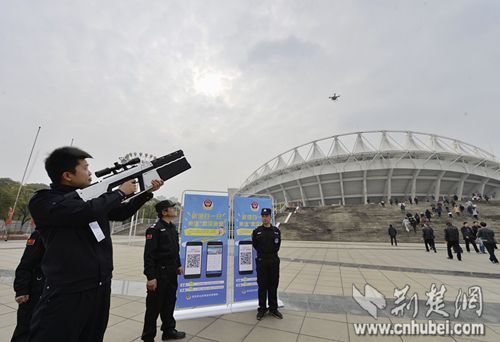
Police in China have debuted their new high-tech anti-drone gun that electronically shoots illegal devices out of the sky — and they’ve put in an order for many more.
Officers from the central Chinese city of Wuhan debuted their expensive new toy, which uses radio-interfering signals to safely take illegal devices out of the sky, outside of a football stadium last Saturday while a match was underway.
On the day, police managed to safely down six active drones from up to 1 kilometer away, reports the Changjiang Daily.
The technology promises to safely remove the device from the sky by enabling a controlled landing, avoiding a crash that could destroy the drone and/or injure someone on the ground.
The anti-drone technology is the antidote for China’s thriving drone producing industry, which has caused several headaches for officials like airport delays and security risks at large gatherings.
China has already implemented a compulsory registration system for owners of drones weighing more than 7kg and enforces strict airspace rules in built up and urban areas.
Costing around $36,200 a piece, Wuhan police are buying a further 19 guns before next month’s city marathon, reports the Chutian Metropolitan Daily.
Hendrik_2000
Lieutenant General
Basically it said that Wing Loong 1 has reached maturity having been used in actual combat condition
Better UAV in the work both smaller for "swarm attack and bigger for longer duration and range as well as cooperative engagement with manned fighter.More intelligent and autonomous UAV is the trend Interesting tidbit it has been used to hunt scud rocket and destroy.
astpendulum.com/les-militairewwws-chinois-parlent-du-drone-wing-loong
Since Wing Loong I entered service in the Chinese Air Force (PLAAF) around 2013, under its official reference of WD-1K or GJ-1 (Gong Ji, which means attacking in Chinese), The institutional media have communicated far too little so far on this first armed MALE drone of the Chinese army.
But the "PLA Daily", the official newspaper published daily by the People's Liberation Army, spent yesterday .
Through an interview with three people - a professor from the Chinese Air Force Command Academy, chief engineer of the Wing Loong drones, and a GJ-1 pilot - we were able to First idea of how the Chinese army sees armed drones and their uses, and at the same time recover some interesting information about the deployment of GJ-1 from PLAAF and Wing Loong I among export customers in theaters. Internal and external operations.
Uninterrupted, cross-platform and network-centric combat
"No fear of human loss, no more constraints on the continuity of operations, collaboration is key, and fighting has become more and more intelligent", it is with these four qualities that WANG Ming Liang (王明亮) Professor of the Chinese Air Force Command Academy, summarizes what it is a military drone.
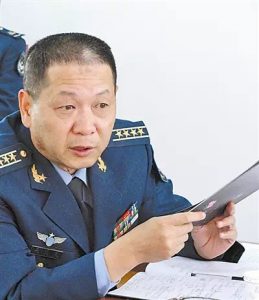
WANG Ming Liang, Professor of the Chinese Air Force Command Academy (Photo: PLA Daily)
According to him, a drone has binary characteristics "pilot" and "unmanned". The appearance of drones gradually transforms the military theories initially centered around the "man" factor to some other things.
The attacker could now fight "frenzy" without having to consider the human loss among his available resources, while the defending camp will fall into a delicate situation where it is difficult to weaken the enemy even in Massively destroying the opposing front-line forces.
The increasingly "droned" fighting will force theorists to review the definition of "effective forces on the battlefield" and "to annihilate the opposing forces" and at the same time to establish the new offensive and defensive rules of the game.
The far greater autonomy of drones compared to the piloted devices will also break the rhythm and the traditional combat cycle, and allows to carry out operations without interruption in order to exhaust the enemy.
But these advantages of UAV are also based on two key elements - the level of integration of the various piloted and unmanned platforms as well as the efficiency of the global system centered network, and the artificial intelligence allowing man, who will remain the master Situations in a fight, to make the best decision of the moment.
Destruction of a ballistic missile on the ground by the drone Wing Loong
For LI Yi Dong (屹 东 东), chief engineer of the 611 Chengdu Institute, the future development of drones will follow three trends.
First, the multiplication of roles and functionalities. According to the chief engineer who has been working on the Wing Loong drones for the last ten years, the development of unmanned platforms will be "bipolarized", that is to say that the small drones will become even smaller to meet the Need to use in "Sawrm" mode (bees), then the big drones will have to go faster, higher, more maneuverable or will fly even longer. Both will greatly extend the use of unmanned equipment in the years to come.
Intelligence is another point of rapid progression underlined by LI Yi Dong, especially in terms of situational awareness and decision-making in non-predefined scenarios.
The ability to evolve in an increasingly complex Machine-Machine environment also requires that drones be much smarter than today.
Finally, the integration of drones into increasingly global application systems is another development trend, such as the collaboration between drones and fighter jets.
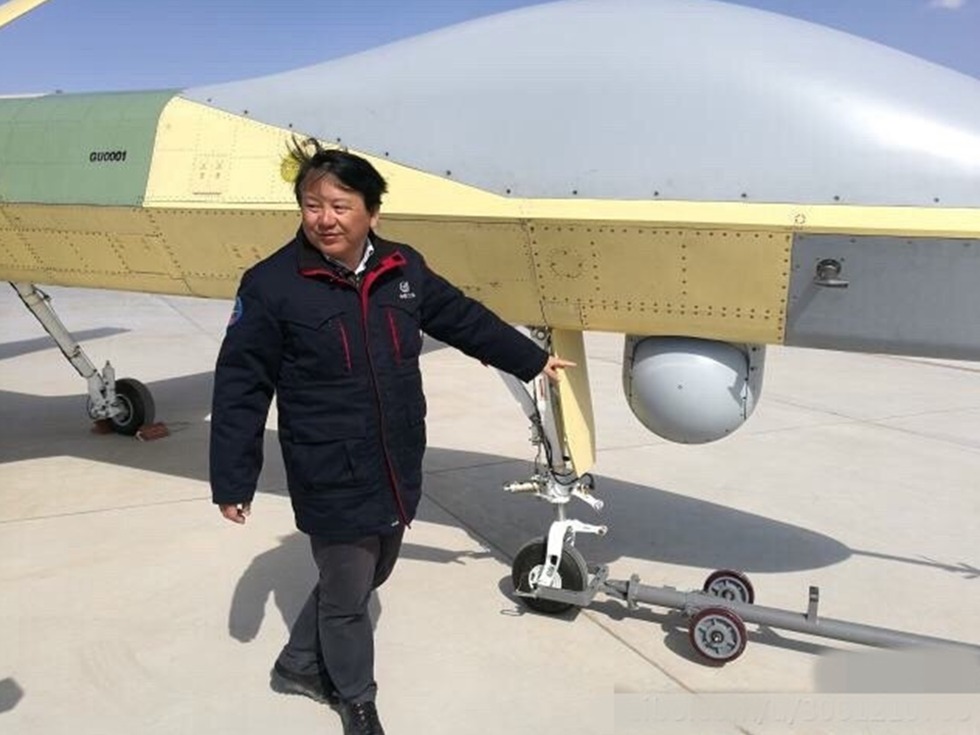
LI Yi Dong, chief engineer of the Wing Loong program, with the new Wing Loong II.
For the families of the Wing Loong drones of Chengdu, represented by Wing Loong I of the first generation and the new Wing Loong II of 4 tons which made , the chief engineer of the Institute 611 indicates that its development Has entered a virtuous circle, thanks to the feedback from domestic and external customers who continue to support the program, aligning new orders.
Saudi Arabia, for example, signed a new contract with the AVIC group for .
As for the operational missions already carried out by the Wing Loong drones, LI indicates that the aircraft deployed abroad as in China have accumulated tens of thousands of flying hours to date with nearly a thousand Missile fired and a hit accuracy of more than 90%.
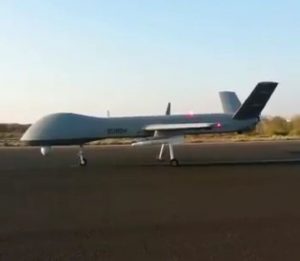
A Saudi Wing Loong I
Chinese drones have also withstood different environments and flight conditions, such as high temperature in the desert, strong cold wind in the alpine and mountainous areas, or even maritime areas.
LI cited two concrete examples - In a real combat mission, three Wing Loong I drones took over and controlled, confinement and reconnaissance over the theater of operations for 7 days, 24 hours a day.
The other example is the destruction by the Wing Loong drones of a Soviet-type ballistic missile-tractor-vehicle ("Scud" type), while the terrorists were filling Liquid propellant of the missile.
Although the chief engineer of Chengdu did not reveal the client's name for these two cases, it is believed that they are the Wing Loong operated by the Saudi army in Yemen.
"I'm not a video game player"
CHEN Yong Chao (超 超) was a fighter pilot from the Chinese Air Force six years ago, but today the man is a pilot of GJ-1, the version of Wing Loong I used by The Chinese army.
One of his former companions gently mocked him: "We have heard that you are sitting in an air-conditioned container, and you just have to move your fingers a little to complete your missions? "
"Is it like playing a video game?" "He added. But CHEN prefers to laugh.
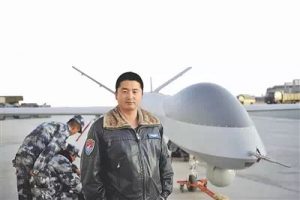
CHEN Yong Chao, GJ-1 Driver
According to this former converted fighter pilot, the GJ-1s have now entered into service and operational. These drones participated in the joint Sino-Russian military exercise in 2014, and colleagues from CHEN, from another unit based in Xinjiang, also carried out reconnaissance missions after the 6.5-magnitude earthquake that struck the earthquake. City of Pishan in July 2015.
Today the CHEN cockpit has changed - In the ground control container, the 200 parameters returned by the drone flying more than 500 km from it are displayed on four large screens. The piloting is done by several rotating pilots, given the autonomy of more than 20 hours of GJ-1.
CHEN said that flying on a drone is a job that requires even more collaboration between the different teams, between pilots, technicians and ground personnel.
For him, seeing targets still alive a few seconds ago that disappear from the screens after a small finger movement remains an enormous psychological challenge.
Although this is not explicitly stated, this suggests that the Chinese Air Force has already conducted Air-Sol strike missions with its GJ-1 drones.
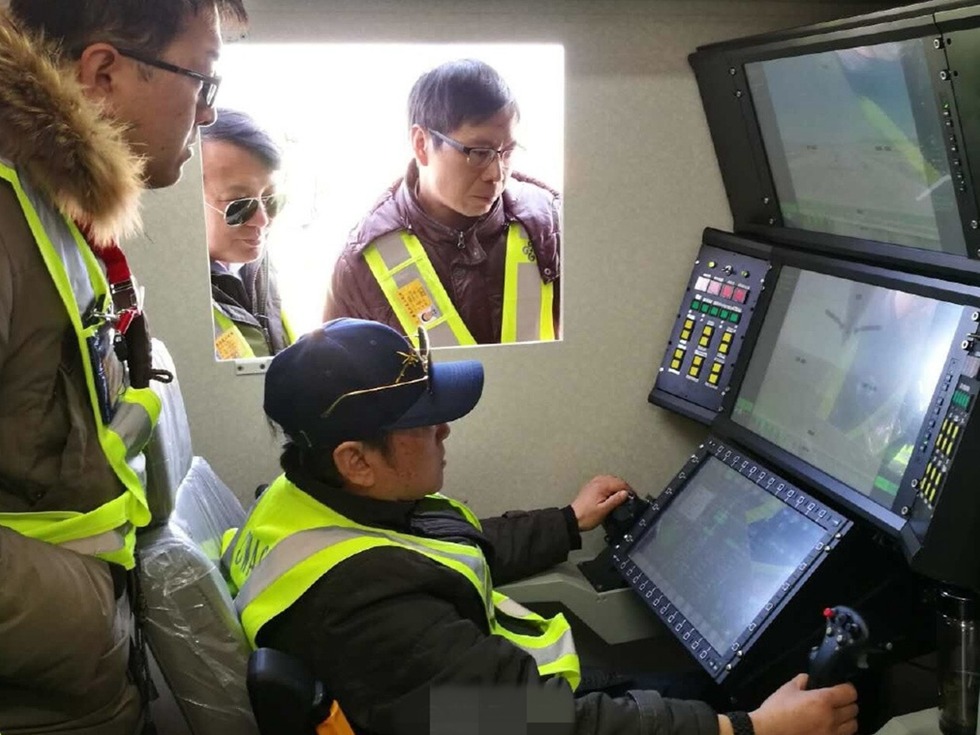
LEI Qiang, former test pilot of the Chinese Air Force and D-10, is responsible for the first flight of Wing Loong II.
Another drone pilot, also a former fighter pilot of the PLAAF, also says that flying on a drone has nothing to do with a video game. It explains that a video game player, who has never flown on a plane, will not be able to know in what flight status the drone is exactly, with only the data received instrument parameters.
He cited an example in which he had to use his former experience of landing under strong lateral wind to have his drone installed during a sudden change in weather conditions around the air base.
Henri K.
Share this article
Better UAV in the work both smaller for "swarm attack and bigger for longer duration and range as well as cooperative engagement with manned fighter.More intelligent and autonomous UAV is the trend Interesting tidbit it has been used to hunt scud rocket and destroy.
astpendulum.com/les-militairewwws-chinois-parlent-du-drone-wing-loong
Since Wing Loong I entered service in the Chinese Air Force (PLAAF) around 2013, under its official reference of WD-1K or GJ-1 (Gong Ji, which means attacking in Chinese), The institutional media have communicated far too little so far on this first armed MALE drone of the Chinese army.
But the "PLA Daily", the official newspaper published daily by the People's Liberation Army, spent yesterday .
Through an interview with three people - a professor from the Chinese Air Force Command Academy, chief engineer of the Wing Loong drones, and a GJ-1 pilot - we were able to First idea of how the Chinese army sees armed drones and their uses, and at the same time recover some interesting information about the deployment of GJ-1 from PLAAF and Wing Loong I among export customers in theaters. Internal and external operations.
Uninterrupted, cross-platform and network-centric combat
"No fear of human loss, no more constraints on the continuity of operations, collaboration is key, and fighting has become more and more intelligent", it is with these four qualities that WANG Ming Liang (王明亮) Professor of the Chinese Air Force Command Academy, summarizes what it is a military drone.

WANG Ming Liang, Professor of the Chinese Air Force Command Academy (Photo: PLA Daily)
According to him, a drone has binary characteristics "pilot" and "unmanned". The appearance of drones gradually transforms the military theories initially centered around the "man" factor to some other things.
The attacker could now fight "frenzy" without having to consider the human loss among his available resources, while the defending camp will fall into a delicate situation where it is difficult to weaken the enemy even in Massively destroying the opposing front-line forces.
The increasingly "droned" fighting will force theorists to review the definition of "effective forces on the battlefield" and "to annihilate the opposing forces" and at the same time to establish the new offensive and defensive rules of the game.
The far greater autonomy of drones compared to the piloted devices will also break the rhythm and the traditional combat cycle, and allows to carry out operations without interruption in order to exhaust the enemy.
But these advantages of UAV are also based on two key elements - the level of integration of the various piloted and unmanned platforms as well as the efficiency of the global system centered network, and the artificial intelligence allowing man, who will remain the master Situations in a fight, to make the best decision of the moment.
Destruction of a ballistic missile on the ground by the drone Wing Loong
For LI Yi Dong (屹 东 东), chief engineer of the 611 Chengdu Institute, the future development of drones will follow three trends.
First, the multiplication of roles and functionalities. According to the chief engineer who has been working on the Wing Loong drones for the last ten years, the development of unmanned platforms will be "bipolarized", that is to say that the small drones will become even smaller to meet the Need to use in "Sawrm" mode (bees), then the big drones will have to go faster, higher, more maneuverable or will fly even longer. Both will greatly extend the use of unmanned equipment in the years to come.
Intelligence is another point of rapid progression underlined by LI Yi Dong, especially in terms of situational awareness and decision-making in non-predefined scenarios.
The ability to evolve in an increasingly complex Machine-Machine environment also requires that drones be much smarter than today.
Finally, the integration of drones into increasingly global application systems is another development trend, such as the collaboration between drones and fighter jets.

LI Yi Dong, chief engineer of the Wing Loong program, with the new Wing Loong II.
For the families of the Wing Loong drones of Chengdu, represented by Wing Loong I of the first generation and the new Wing Loong II of 4 tons which made , the chief engineer of the Institute 611 indicates that its development Has entered a virtuous circle, thanks to the feedback from domestic and external customers who continue to support the program, aligning new orders.
Saudi Arabia, for example, signed a new contract with the AVIC group for .
As for the operational missions already carried out by the Wing Loong drones, LI indicates that the aircraft deployed abroad as in China have accumulated tens of thousands of flying hours to date with nearly a thousand Missile fired and a hit accuracy of more than 90%.

A Saudi Wing Loong I
Chinese drones have also withstood different environments and flight conditions, such as high temperature in the desert, strong cold wind in the alpine and mountainous areas, or even maritime areas.
LI cited two concrete examples - In a real combat mission, three Wing Loong I drones took over and controlled, confinement and reconnaissance over the theater of operations for 7 days, 24 hours a day.
The other example is the destruction by the Wing Loong drones of a Soviet-type ballistic missile-tractor-vehicle ("Scud" type), while the terrorists were filling Liquid propellant of the missile.
Although the chief engineer of Chengdu did not reveal the client's name for these two cases, it is believed that they are the Wing Loong operated by the Saudi army in Yemen.
"I'm not a video game player"
CHEN Yong Chao (超 超) was a fighter pilot from the Chinese Air Force six years ago, but today the man is a pilot of GJ-1, the version of Wing Loong I used by The Chinese army.
One of his former companions gently mocked him: "We have heard that you are sitting in an air-conditioned container, and you just have to move your fingers a little to complete your missions? "
"Is it like playing a video game?" "He added. But CHEN prefers to laugh.

CHEN Yong Chao, GJ-1 Driver
According to this former converted fighter pilot, the GJ-1s have now entered into service and operational. These drones participated in the joint Sino-Russian military exercise in 2014, and colleagues from CHEN, from another unit based in Xinjiang, also carried out reconnaissance missions after the 6.5-magnitude earthquake that struck the earthquake. City of Pishan in July 2015.
Today the CHEN cockpit has changed - In the ground control container, the 200 parameters returned by the drone flying more than 500 km from it are displayed on four large screens. The piloting is done by several rotating pilots, given the autonomy of more than 20 hours of GJ-1.
CHEN said that flying on a drone is a job that requires even more collaboration between the different teams, between pilots, technicians and ground personnel.
For him, seeing targets still alive a few seconds ago that disappear from the screens after a small finger movement remains an enormous psychological challenge.
Although this is not explicitly stated, this suggests that the Chinese Air Force has already conducted Air-Sol strike missions with its GJ-1 drones.

LEI Qiang, former test pilot of the Chinese Air Force and D-10, is responsible for the first flight of Wing Loong II.
Another drone pilot, also a former fighter pilot of the PLAAF, also says that flying on a drone has nothing to do with a video game. It explains that a video game player, who has never flown on a plane, will not be able to know in what flight status the drone is exactly, with only the data received instrument parameters.
He cited an example in which he had to use his former experience of landing under strong lateral wind to have his drone installed during a sudden change in weather conditions around the air base.
Henri K.
Share this article
Last edited:
- Status
- Not open for further replies.





